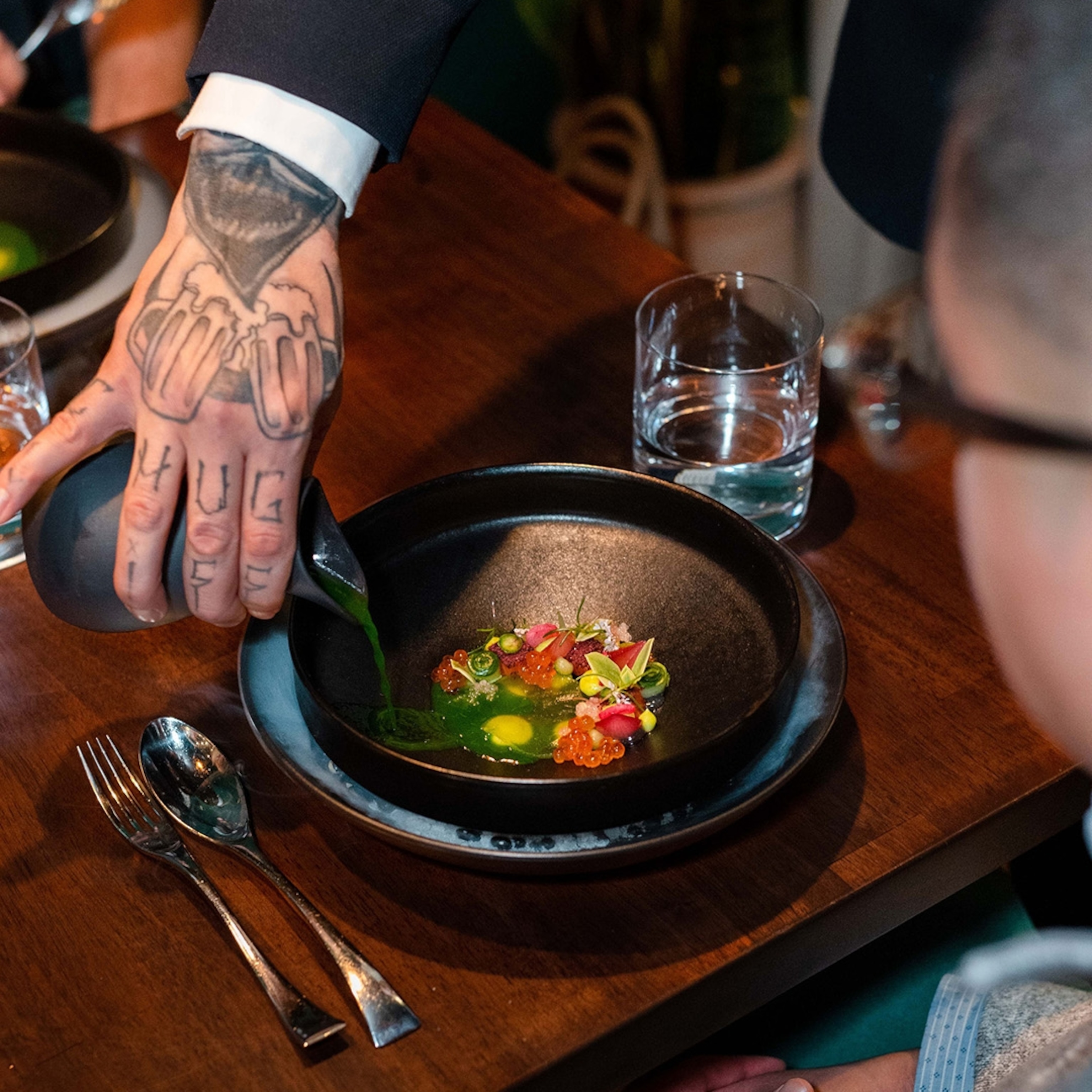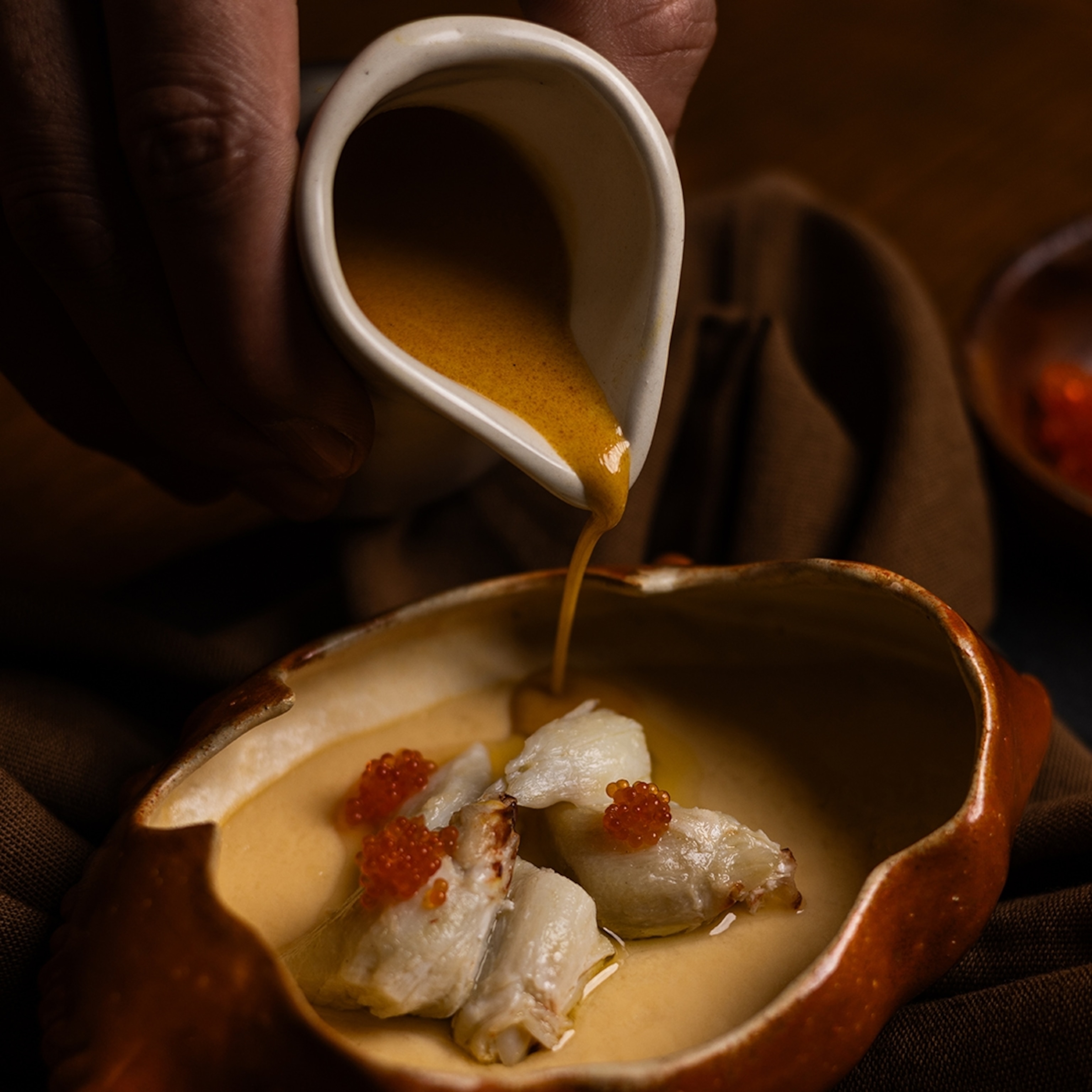
Three Table Manners Hacks That Will Change Your Life
Mastering dining etiquette is the most efficient life hack. It would improve society’s functioning the most, for the least amount of time. Of all the restaurant world’s fast-casual casualties, the decline in dining etiquette is among the most lamentable. Funny that table manners diminish as public eating increases.
It’s not that Chipotle should offer long-handled Charleston rice spoons. But the increase in casual dining means far fewer people know how to eat when seated at a table or—even more anxiety-producing—are asked to set a table with even just a plate and utensils (that aren’t rolled up in a napkin).
Contrary to my 7-year-old’s belief, etiquette doesn’t exist just so people can scold you when you’ve breached it. It is a set of rules that serves a practical purpose. Dining etiquette particularly is an unspoken language that moves a meal smoothly along so people can focus on enjoying food and conversation without interruption. Knowing just a few of the rules of, as we call it at home, “eatiquette” (the mashup of eat + etiquette)—and teaching them to any children in your life—will improve mealtimes considerably.
I have three fundamental rules of dining etiquette, lost over the years, but in serious need of reviving.
First, learn the language of utensils. I was a restaurant critic for five years and diners often complained: “I hate when waiters ask, ‘Are you still working?’ I’m not working, I’m eating, and please stop interrupting my dinner.” The problem is that both diners and waiters don’t know a simple, non-verbal, generations-old way of indicating that you’re finished: place the fork and knife together, parallel next to each other, at the bottom right of the plate.
If everyone, including diners, relearned this rule, we could save considerable time, annoyance, and undertipping.
When a diner isn’t finished, but is just placing the utensils down for a moment or needs to step away from the table, the utensils should be in a crossed position perpendicular to each other, over the plate. That’s it. And it works for dining out or eating at home—if a guest’s utensils are in the crossed position, a host knows she would like more food.
It’s something of an obsessive mission of mine to reinstitute this nonverbal cue. It’s not world peace, but we can still use society’s niceties to make the world a little, well, nicer.
Second, generally, used utensils stay off the table. A used napkin never goes back on the table (in case it’s not obvious why, read this piece on the germs researchers recently found around mouths and in beards). Diners who get up from the table should place a napkin on the chair and a waiter or host can either ignore it or put a fresh, folded one on the table in its place.
If a soup bowl is a wide, shallow bowl that resembles a plate then the spoon should be left in the bowl at all times. But soup bowls that are deep and narrow will usually rest on a saucer, and here the spoon should rest on the saucer, not in the bowl, so you don’t accidentally hit the handle of the spoon and send the soup flying into your lap. The purpose of this rule: Once a utensil has been in a mouth, it should never be back on the table (see note about beard germs above).
And while we’re on the subject of soup, to get the last drops of soup, tilt the bowl away from you, so if it spills, it won’t spill on you. This is common sense but it’s amazing how many people tilt the bowl toward themselves.
Third, taste your food before asking for salt or pepper. Restaurants who make waiters place a salad down on the table and immediately ask if fresh-ground pepper is desired drive me bananas. How is a diner supposed to know if something needs pepper if she hasn’t tasted it?
If salt and pepper are on the table, they should be passed together, even if only one has been requested. The assumption is that if one seasoning is needed, the other might be too. If salt and pepper aren’t on the table, think before you request—your host or the person who cooked the meal may be offended that the food is not appropriately seasoned. If it’s your mother-in-law, eat the bland food and smile. On the other hand, even Michelin-starred chefs make mistakes, so if it’s prepared in a restaurant and you’re paying for the meal, you should eat it exactly as you want.
I once knew someone becoming an ambassador overseas who brought in an etiquette expert for the kids. These were well-behaved kids; they needed an international table manners expert, which is great work if you can find it. What my friend learned from the experience, not surprisingly, is no matter where you are in the world, dining etiquette has the same goal: making the meal a more pleasant experience. Chopsticks are a utensil–they are not for pointing, licking, or going on a hunt through your plate to find some desired bit of food (and neither is a fork).
We take so much time analyzing our meals, critiquing chefs, demanding local and organic ingredients from artisanal and small-batch producers. Now if only we would reinstate a few of the basics of dining etiquette, we could elevate the quality of our dining to match the quality of our food.








